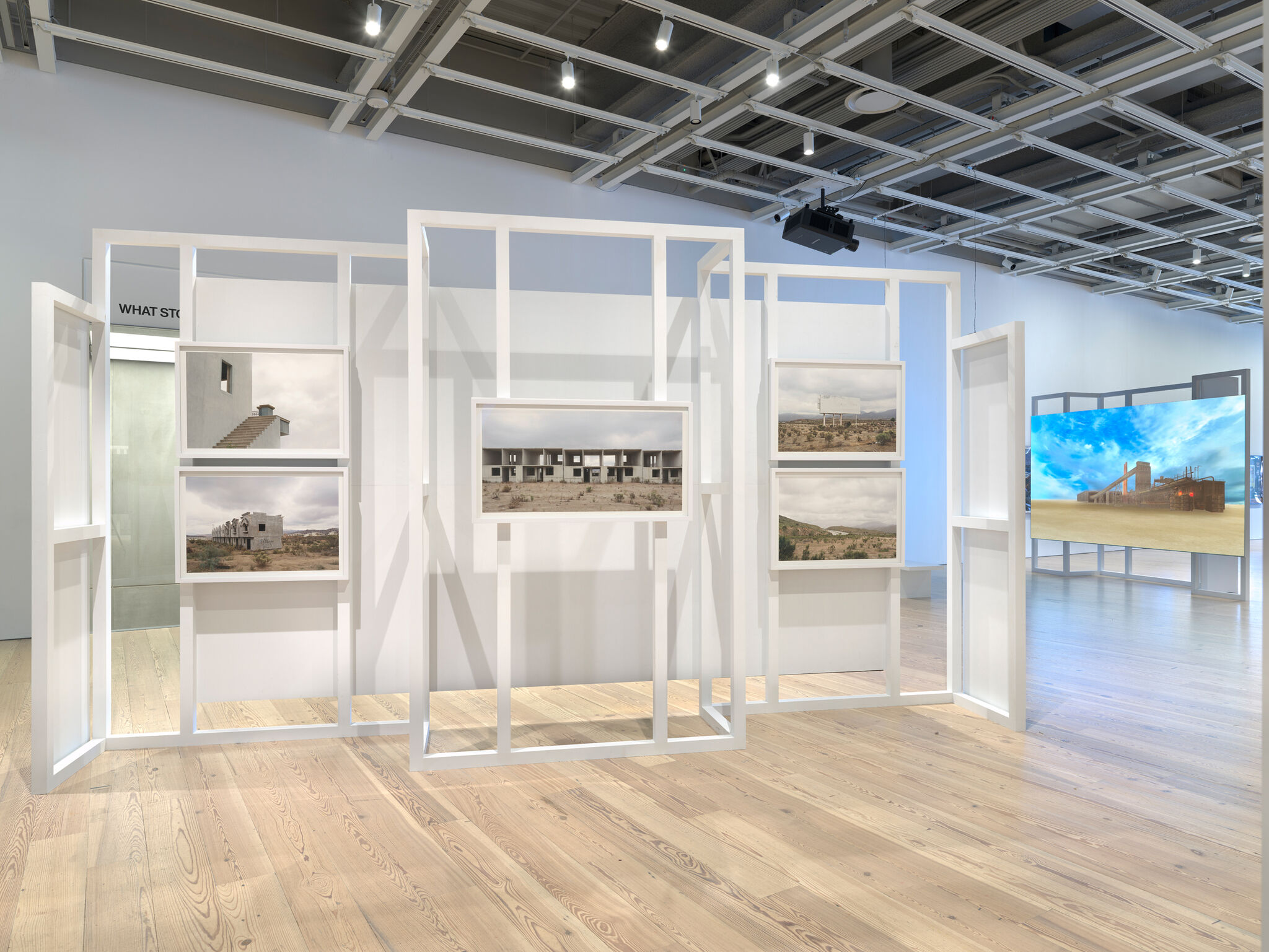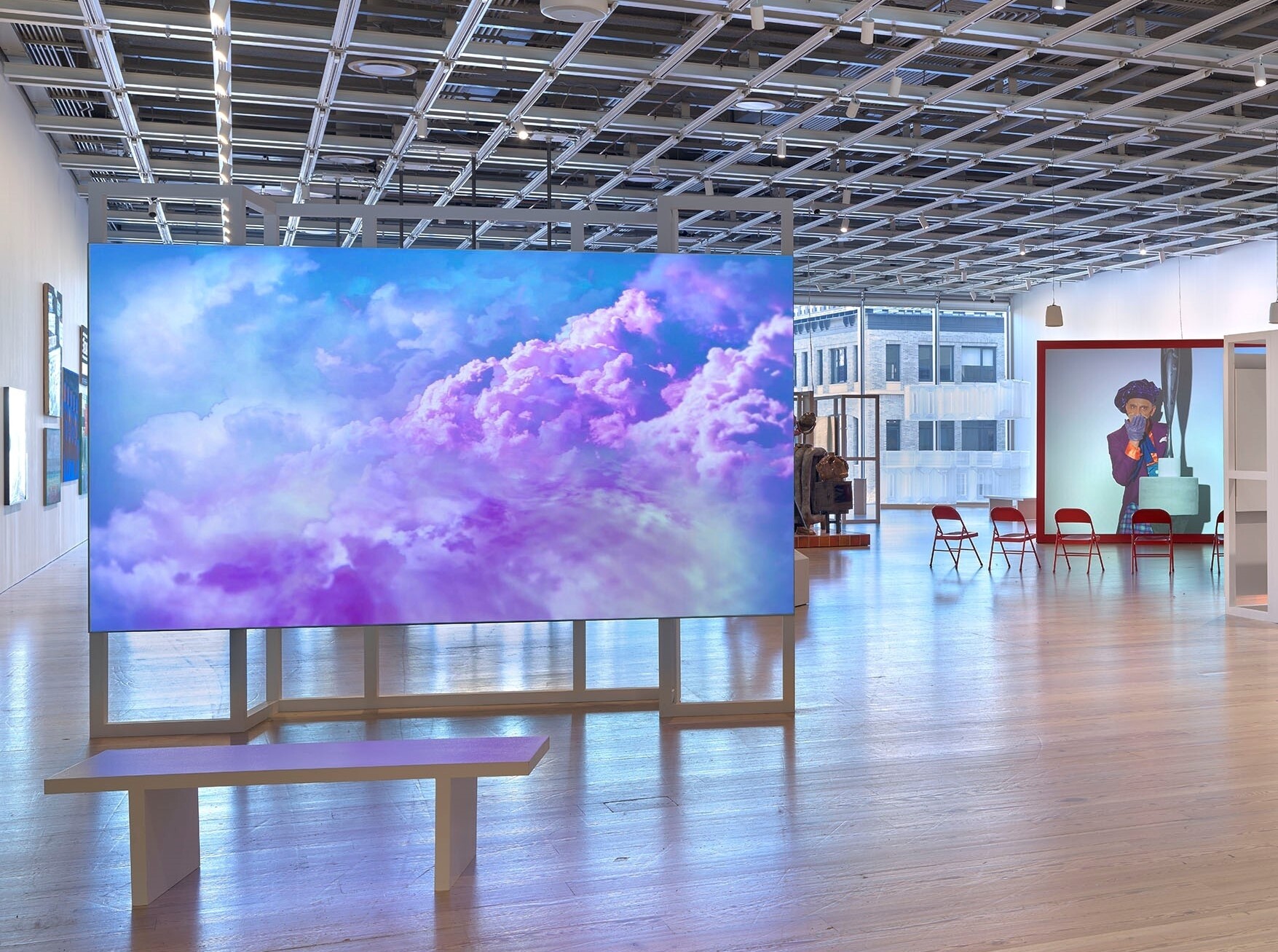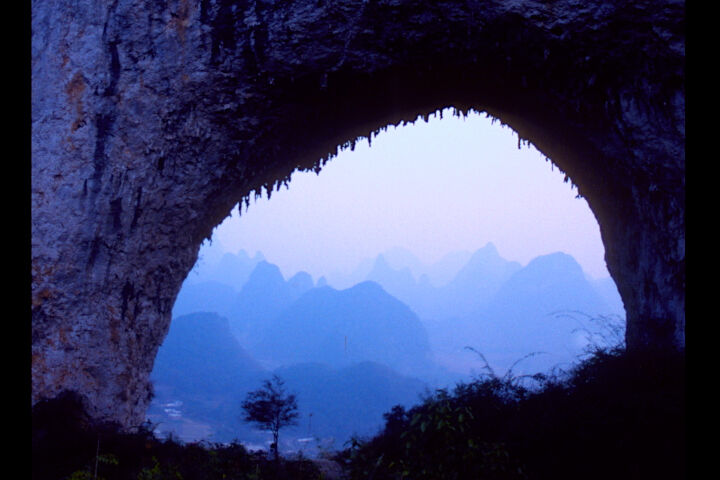Not on view
Date
2019
Classification
Video
Medium
Video, color, sound, 18:01 min
Accession number
2023.4
Edition
1/8 | 2 APs
Credit line
Whitney Museum of American Art, New York; purchase, with funds from the Laurie M. Tisch Illumination Fund
Rights and reproductions
© Danielle Dean
Audio
-
Danielle Dean, Línea larga y baja (Fordlandia)
In Whitney Biennial 2022: Quiet As It's Kept (Spanish)
0:00
Danielle Dean, Línea larga y baja (Fordlandia)
0:00
Narrator: Mientras vivía en Detroit, Danielle Dean quedó fascinada con la historia de Ford Motor Company. Algunas de las animaciones y acuarelas que ves por aquí cerca están inspiradas en un archivo de publicidades de Ford. Y, en algún punto, todas las obras toman el concepto de la línea de ensamblaje de Ford.
Danielle Dean: La idea de que la mano de obra se divida a lo largo de una línea de ensamblaje para que un trabajador haga solo una parte de la totalidad del trabajo es tan específica y simple, pero siento que es sumamente relevante para la vida actual. Nuestras maneras de trabajar y de vivir están interconectadas.
Me interesa profundamente eso: cómo ha surgido este estilo de vida gracias a la influencia de la producción de vehículos. Antes, lo que generaba grandes ganancias era el caucho. Era fundamental a nivel global, porque se fabrican muchísimas cosas con caucho. Y aún hoy en día es importante, pero más importantes son los datos, lo que conocemos como macrodatos. La información que permite desarrollar la IA es la nueva materia prima. A nivel personal, tengo esta “obsesión” por comparar la historia con el presente, y por descubrir de qué manera el pasado influyó o se relaciona con la actualidad.
Me interesaba mucho el hecho de que haya tantos trabajos que las personas hacen, o tantos estilos de vida que surgieron a raíz de este proceso fordiano, que hoy en día influye en la vida cotidiana de la sociedad. Tomemos el ejemplo de los trabajadores de Amazon Mechanical Turk, donde vemos una enorme colaboración masiva en línea para desarrollar datos para la IA. Muchas personas reciben un salario por iniciar sesión en estos sitios y completar cuestionarios e información sobre sí mismas para contribuir a los macrodatos.
Este tipo de historias me hace preguntarme: ¿qué clase de presente tenemos? ¿O qué clase de futuro tendremos? Porque la automatización está haciendo que los robots acaparen cada vez más tareas; esa es la parte un poco especulativa y de ciencia ficción, pero es verdad que probablemente ocurra. ¿Qué sucederá entonces con los seres humanos? ¿Qué tipo de vida tendremos en el futuro?
-
0:00
Danielle Dean, Long Low Line (Fordland)
0:00
Danielle Dean: I lived in Detroit for a few years, and the whole thing started because of the fact that I kind of got obsessed with Ford and Ford cars because of being there.
Narrator: Some of the nearby animation and the watercolors you see here draw on an archive of Ford advertisements. And on some level, all of the works draw on Ford’s larger idea of the assembly line.
Danielle Dean: The idea that a division of labor is split along an assembly line so that a worker only does one part of a whole, is so specific and simple, but I feel like it’s so weighted on how we live now. How we work and how we live are intertwined.
And I’m just so interested in that: how that way of life has come about through the influence of something like the production of cars. It used to be rubber, for example, was a big money maker. It was a massively big deal, globally, because so much is made from rubber. And it still is a big deal, but now what’s more of a big deal is data. What they call big data. So getting information for development of A.I. is the new raw material. And so I just personally have this obsession for comparing history to the present and how history has influenced or has a kind of intertwining.
I really was interested in how there’s a lot of labor that people do or a lot of ways of life that have come about that are an extension of this Fordist process and that now affects how people just live their everyday. For example, Amazon Mechanical Turk workers, which is one example of a lot of online crowdsourcing to develop data for A.I. A lot of people get all of their wages from logging in to these sites and filling in questionnaires and information about themselves to contribute to mass data.
That type of history is about: well, what kind of present or what kind of future? Because also, this type of automatization is leading to robots taking over all of the work, right? Which is the speculative sci-fi part, but it’s true that it probably will happen. So then again, what happens to humans? What life are we going to lead in the future?
-
0:00
Verbal Description: Danielle Dean’s 2.00. a.m.
0:00
Danielle Dean’s 2.00. a.m. (2021) is a watercolor on paper measuring 48 × 84 inches (121.92 × 213.36 cm).
Narrator: This painting by Danielle Dean is a large-scale imaginary landscape bathed in moonlight. The viewer is placed in the position of looking over large rocks placed in the center foreground of the painting. From the upper left corner green palm leaves drift in the night sky. Beyond the rocks enframed by the palm leaves lies a valley of rough terrain in which an office workspace is located.
Danielle Dean: In this first layer of rocky terrain, you can see a sort of workspace that has three computers, two computer screens and one laptop and an open chair. There's no one there, but the screens are on. And, actually, the first screen is a depiction of Amazon Mechanical Turk website, so the work that the person may be doing, and then there is an image of the whole landscape that you see, but reduced in size on the screen.
Narrator: In the foreground is a sandy area that is the top of a cliff with a small dog sitting on top of it. A stick lies near the animal. The dog is turned away from the viewer and gazes into the distance.
Moving into the center area of the painting beyond the valley of the desolate office space is an area of trees, the colors of autumn leaves. To the right of the foliage is a large, jagged boulder. Beyond the trees and the boulder are rows and rows of data servers. Silvery and geometrically organized they recede into the distance meeting a river overlooked by midnight blue cliffs. Boats drift on the water - a bridge spans the river.
Danielle Dean: And hovering above a cliffs and is an alien spaceship. Beyond the alien spaceship is a flat city with lights. And then beyond that is more mountains, and you can see the night sky, the stars, and a kind of dramatic lightning-like moon.
Narrator: This work is from a series based on elements of Ford car ads from different time periods. The artist removes most people and cars from the ads in order to empahsize the fantasy created by the landscape.
Danielle Dean: In all of the ads, there's people and cars, but I always take the people out and I always take the cars out, but I like to leave the animals. So that's why there's a little dog there.
Installation photography
-


Installation view of Whitney Biennial 2022: Quiet as It’s Kept (Whitney Museum of American Art, New York, April 6- September 5, 2022). From left to right: Mónica Arreola, Untitled, 2020; Mónica Arreola, Untitled, 2018; Mónica Arreola, Untitled, 2018; Mónica Arreola, Untitled, 2018; Mónica Arreola, Untitled, 2020; Danielle Dean, Long Low Line (Fordland), 2019. Photograph by Ron Amstutz
From the exhibition Whitney Biennial 2022: <br>Quiet as It’s Kept


